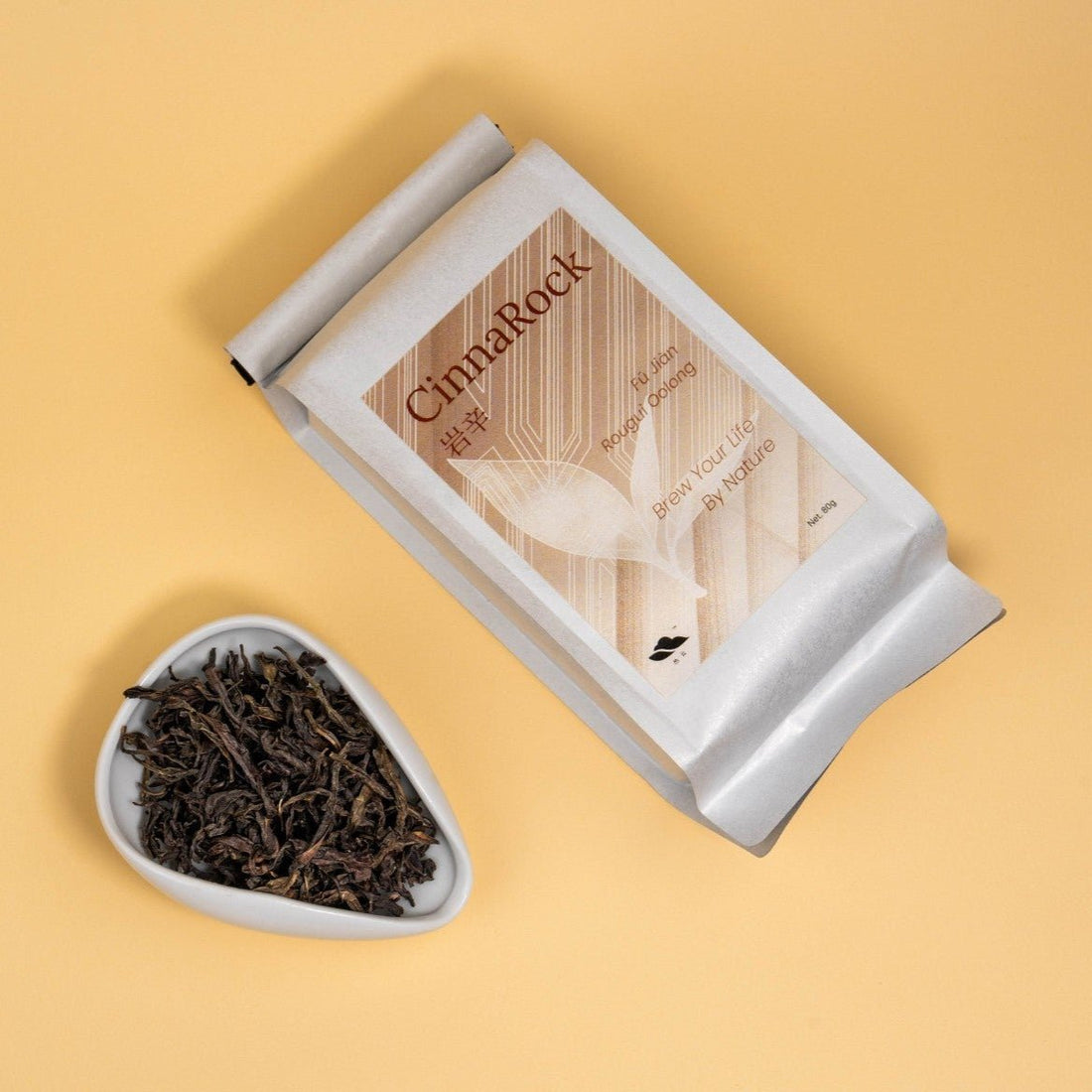
Wuyi Rock Tea (Wuyi Yancha): Fujian’s Mineral-Kissed Oolong Legacy
Key Takeaways
- Wuyi Rock Tea, a premium oolong from Wuyi Mountain, Fujian, is celebrated for its unique "rock rhyme"—a lingering mineral-rich taste from tea trees growing in rock crevices.
- Classified by origin: Zhengyan (core mountain area, highest quality), Ban Yan (mountain edges, medium quality), and Zhou Tea (riverbanks, average quality).
- Famous varieties include Da Hong Pao, Rou Gui, Shui Xian, and Tie Luo Han, each with distinct flavors.
- The original 6 "mother tree Da Hong Pao" have stopped production since 2006; market "Da Hong Pao" is mostly from cloned offspring or a collective term for Wuyi Rock Teas.
- Basic production steps: plucking, withering, shaking, pan-frying, rolling, and baking, with baking adjusting flavor depth.
- Brewing follows oolong techniques: use warm teaware, 8g tea/standard vessel, 95°C+ water, short initial steeps, and re-steep 5+ times.
Wuyi Rock Tea: Fujian’s Mineral-Kissed Oolong Legacy
Nestled among the misty peaks of Wuyi Mountain in Fujian Province, Wuyi Rock Tea—one of China’s most revered oolong varieties—owes its fame to the mountains: its trees grow in cracks of ancient rocks, absorbing mineral-rich nutrients. This unique terroir births its signature "rock rhyme," making it a treasure for tea connoisseurs. Let’s explore its story, production, and how to savor it.
1. The Secret of "Rock Rhyme": Terroir as the Artist
What sets Wuyi Rock Tea apart is its "rock rhyme" (yan yun)—a distinct, lingering taste of minerals. This stems from Wuyi Mountain’s porous red sandstone rocks, which release trace minerals like iron and calcium. Tea trees rooted in these crevices absorb these elements, infusing leaves with unmatched depth.
2. Classification by Origin: Where Quality Takes Root
Wuyi Rock Tea’s quality is tied to its birthplace, divided into three grades:
- Zhengyan Tea: Grown in the heart of Wuyi’s core area, with the strongest rock rhyme and richest flavors.
- Ban Yan Tea: From mountain edges, with milder but distinct rock rhyme.
- Zhou Tea: Cultivated near riverbanks, with lighter taste lacking intense mineral depth.
3. Iconic Varieties: A Symphony of Flavors
Famous varieties include:
- Da Hong Pao ("Big Red Robe"): Robust, honeyed sweetness with bold rock finish.
- Rou Gui ("Cinnamon"): Warm, spicy notes with crisp mineral bite.
- Shui Xian ("Narcissus"): Smooth, floral, with creamy texture and gentle rock undertones.
- Tie Luo Han ("Iron Arhat"): Bold, earthy with a hint of smoke.
4. The Truth About "Da Hong Pao"
The original 6 "mother tree Da Hong Pao" (over 360 years old) stopped production in 2006. Most market "Da Hong Pao" comes from cloned offspring or is a collective term for Wuyi Rock Teas.
5. Brief Production Process
Wuyi Rock Tea’s craftsmanship shapes its character, with key steps:
- Plucking: Selecting young leaves in spring or autumn.
- Withering: Drying leaves to reduce moisture.
- Shaking: Gently agitating leaves to trigger oxidation, developing aroma.
- Pan-frying: Stopping oxidation with heat to lock in freshness.
- Rolling: Shaping leaves to release essential oils.
- Baking: Slow-roasting to adjust flavor—light baking preserves freshness, while heavier baking enhances depth, complementing the rock rhyme.
6. Royal Tribute History
Wuyi Rock Tea has long been esteemed: it was a royal tribute during the Song Dynasty (960–1279 CE, 10th to 13th centuries) and Ming Dynasty (1368–1644 CE, 14th to 17th centuries), valued by emperors for its unique flavor.
7. Brewing Wuyi Rock Tea
To unlock its rock rhyme:
- Teaware: Use a small clay teapot or covered bowl(Gaiwan).
- Warm teaware: Rinse with boiling water, add 8g tea, and gently shake to awaken leaves.
- Water temperature: 95-100°C (high heat extracts minerals).
- Steeping time: 5 seconds for first 3 infusions; extend to 10-15 seconds thereafter. High-quality tea re-steeps 5+ times.
Wuyi Rock Tea is a blend of terroir and craftsmanship. Savor it, and taste the legacy of Wuyi Mountain.
